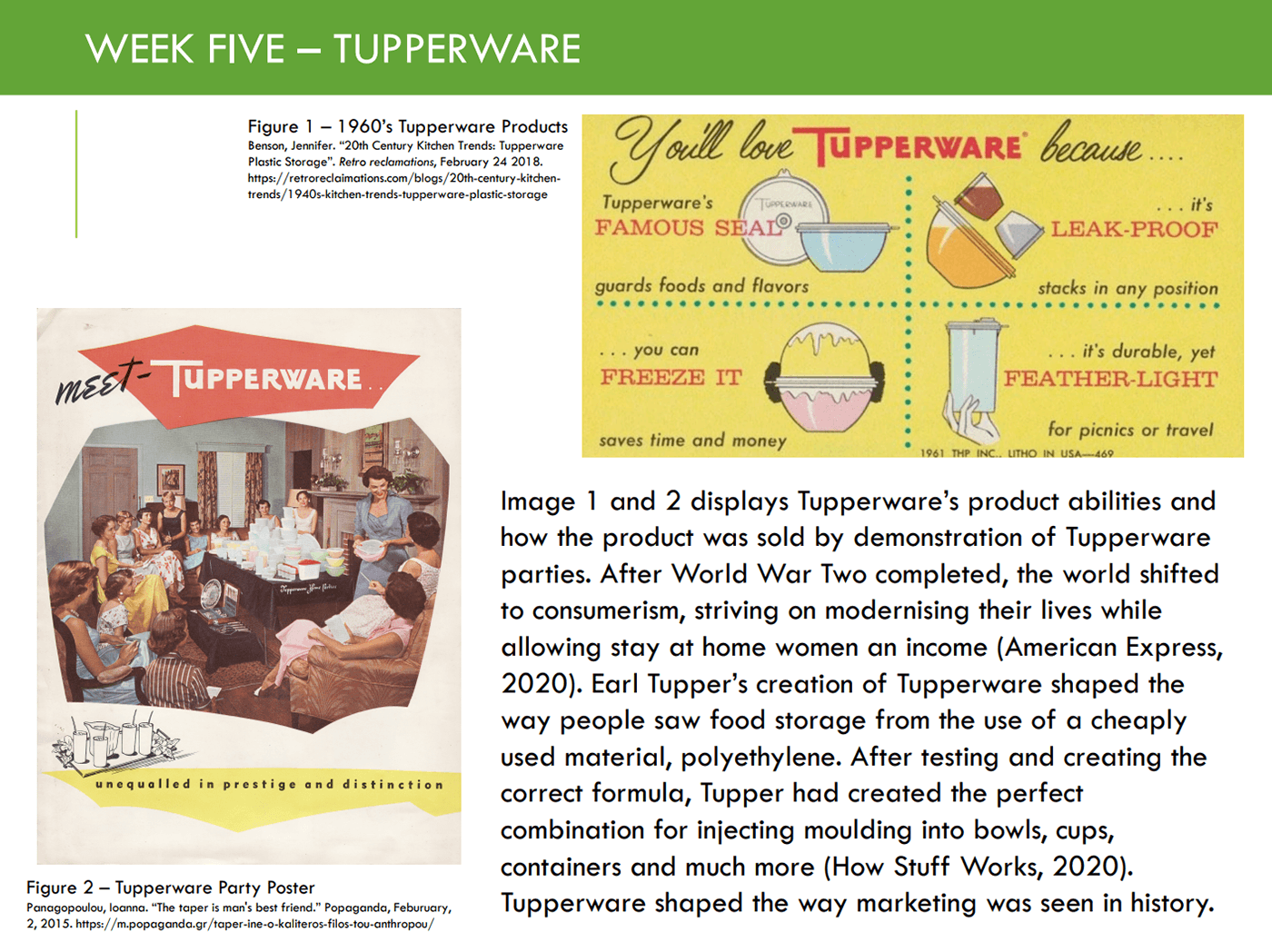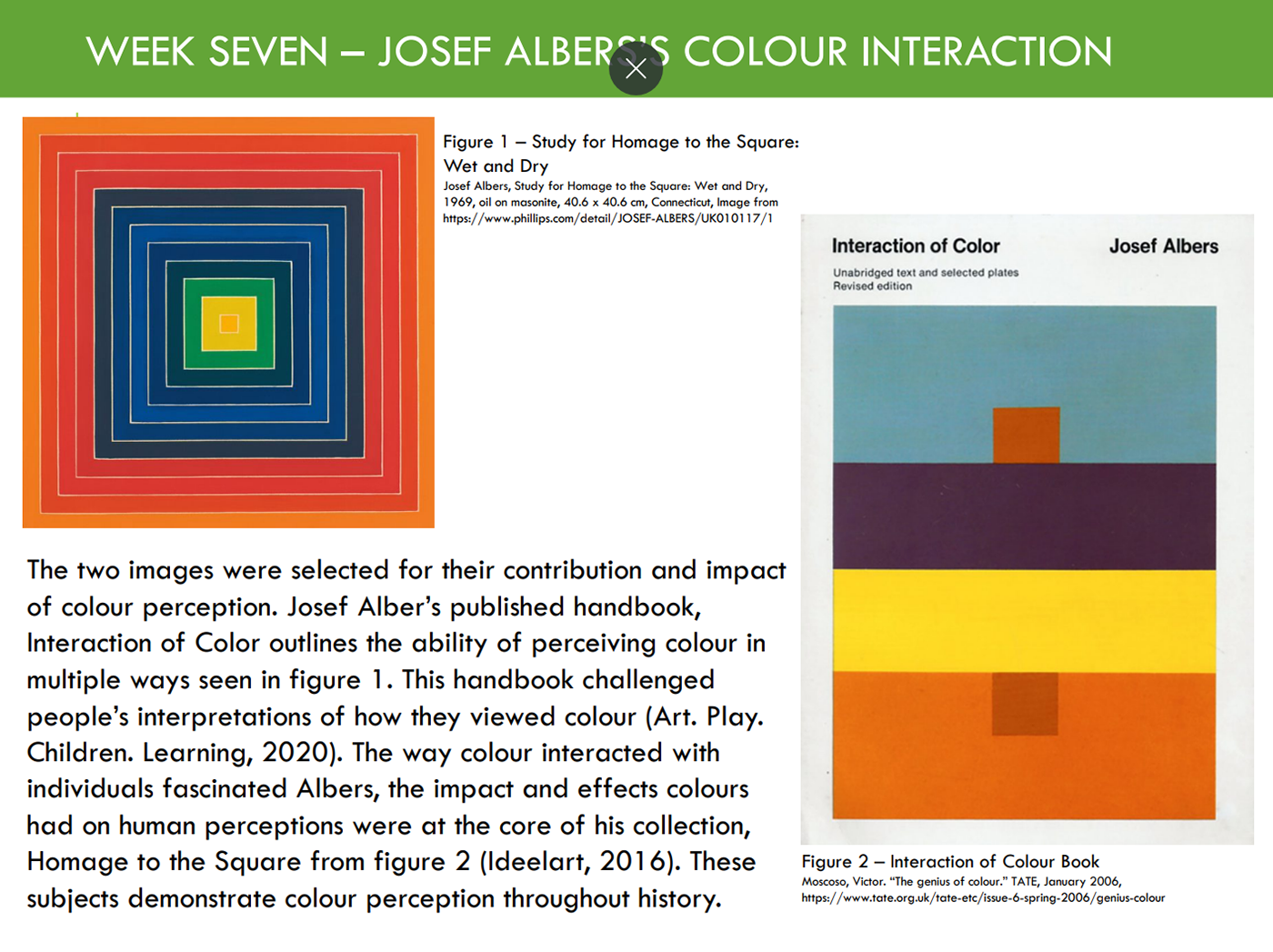In my first year, I took a course that critically examined design history and theory. We looked at how design movements, designers, and the materials used in design objects were connected to production and consumption, and how they were integrated into systems of meaning. The course helped me distinguish between different concepts and historical figures, which framed and informed key themes influencing art and design theory, practice, and culture then and in the future. We also explored the relationship between design and its place in history, why designers need this knowledge, and how they should employ it in their future practice.

I participated and delivered a Pecha Kucha style 20x20 Presentation in-class during Week 6. I selected six areas of interest from the information I had filled out on my Worksheets. Each area was presented to the class using 20 slides, each shown for 20 seconds (for a total of 6 minutes and 40 seconds). Prior to the presentation, I set and automatically timed each slide to the 20-second duration in Powerpoint/Keynote. Each slide contained only one image, with no text, titles, or other content.
In this course, I explored a conventional, historical account in relation to design theory and practice, which informed a broader contemporary narrative. I learned to critique design through a series of lectures that investigated the present through the past and projected into the future of design.

In this course, I explored a conventional, historical account in relation to design theory and practice, aiming to inform a broader contemporary narrative. I learned to critique design through a series of lectures that investigated the present through the past and projected into the future of design.

After successfully completing the course, I was able to:
1. Demonstrate an understanding of the historical changes in design.
2. Identify the main ideas and theories underpinning contemporary design culture.
3. Employ methods of research, reflection, and debate to recognize the diverse underlying values, practices, and principles of design.
4. Engage in criticism, discussion, and understanding of the scope and variety of design.
5. Source, organize, interpret, and present findings in a report format to meet academic standards.
2. Identify the main ideas and theories underpinning contemporary design culture.
3. Employ methods of research, reflection, and debate to recognize the diverse underlying values, practices, and principles of design.
4. Engage in criticism, discussion, and understanding of the scope and variety of design.
5. Source, organize, interpret, and present findings in a report format to meet academic standards.


In this course, I had to undertake secondary research on design within a historical and theoretical context. I engaged with a series of 6 lectures delivered by the Lecturer in weeks 1-6 and conducted individual research on specific areas of interest. I conducted information research using reference books, publications, journals, and the internet.












